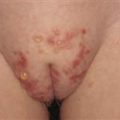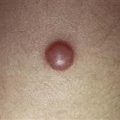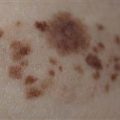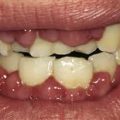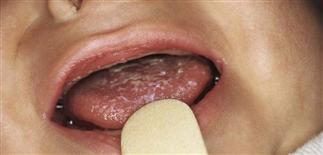
White patch on tongue in infant with thrush.
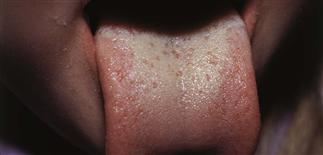
Thrush involving tongue of toddler.
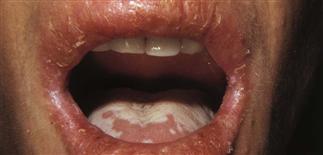
Mucocutaneous candidiasis in immune deficiency. White coated tongue, dry, fissured lips.
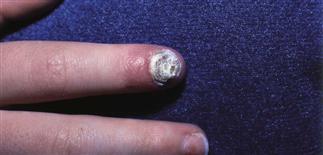
Non-tender, red, swollen distal finger with white crumbly nail in finger sucker with Candida paronychia.
In macerated skin, C. albicans may invade to establish infection. In different body regions, distinct clinical features are found.
In newborns and infants, white plaques on a red base are seen in the oral cavity especially the buccal mucosa (thrush). Use of a pacifier may be permissive for oral candidiasis.
In the immunosuppressed or immunodeficient child, the tongue and lips may also be involved. Involvement of the angles of the lips is common (angular cheilitis). Candida can invade the skin folds, producing intertrigo or superinfect diaper dermatitis. The appearance of satellite red papules or pustules may be a useful clue. Paronychia with red painless swelling of the skin around a thumbnail or fingernail is a common result of thumb sucking.
Congenital candidiasis, which is quite rare, is acquired in utero and presents with red, scaling skin with scattered pustules at birth.
Vulvovaginal candidiasis presents as a thick white discharge with red mucosa. It is seen predominantly in teenage females.
TREATMENT
For infantile thrush, nystatin oral suspension four times daily for 5 days is efficacious.
Oral therapy is reserved for children who are immunosuppressed, immune deficient, or have cancer. Oral fluconazole or itraconazole 5 mg/kg/day for 21 days is usual treatment. Vaginitis in the adolescent female may be treated with a single 250 mg dose of fluconazole.

